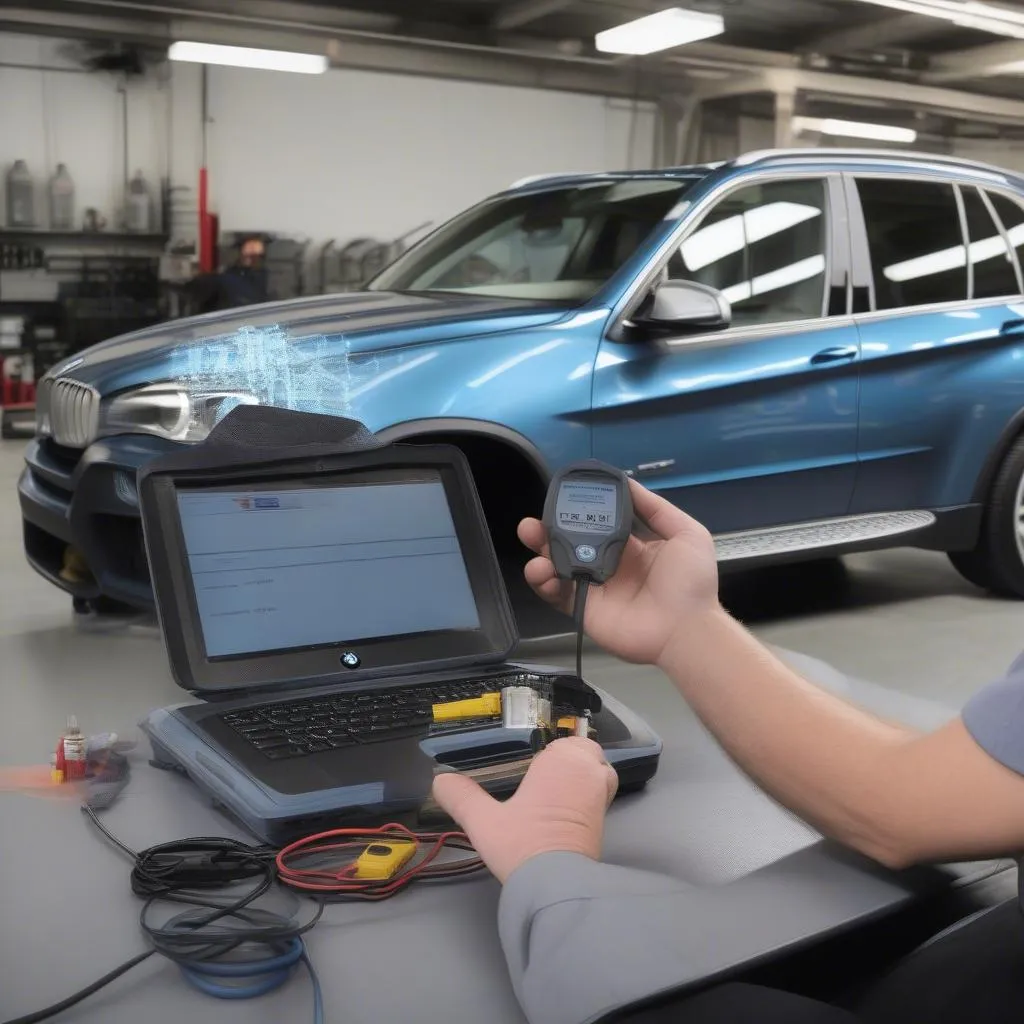Ever wondered what those cryptic codes your car throws up mean? You’re not alone. The world of car diagnostics can feel like a foreign language, full of acronyms and numbers that seem designed to confuse. This is where OBD codes come in – they’re the language your car uses to communicate problems to you, and understanding them is essential for keeping your vehicle running smoothly.
What Are OBD Codes?
OBD stands for On-Board Diagnostics, a standardized system that monitors your car’s various systems and functions. When an issue is detected, your car’s computer system generates a diagnostic trouble code (DTC) or OBD code.
Think of it like a doctor’s diagnosis – the OBD code provides a clue about the specific problem your car is experiencing. This is especially important for European cars, where diagnostic systems can be complex and require specialized tools for proper analysis.
Why Is It Important to Understand OBD Codes?
Understanding OBD codes is crucial for car owners, mechanics, and even insurance companies. Here’s why:
- Early Problem Detection: OBD codes can alert you to potential issues before they escalate into major problems, saving you time and money on costly repairs.
- Informed Repairs: Armed with this knowledge, you can speak the same language as your mechanic, leading to more accurate diagnoses and efficient repairs.
- Insurance Claims: OBD codes can be crucial evidence in insurance claims, especially if you’re involved in an accident or need to file a claim for mechanical failure.
Understanding the Different Types of OBD Codes
OBD codes are categorized into different groups, each indicating a different type of issue:
- P Codes: These codes relate to powertrain issues, such as problems with the engine, transmission, or emissions system.
- B Codes: These codes are related to body control modules, covering components like lights, windows, door locks, and other body functions.
- C Codes: These codes address issues with the chassis, including the braking system, steering system, and suspension.
- U Codes: These codes signal a malfunction in the network communication between different modules within your car.
How to Read an OBD Code
OBD codes are typically structured like this: P0123, where:
- P: Indicates a powertrain-related code
- 0123: Represents the specific code number, which is unique to a particular issue.
Decoding OBD Codes: A Practical Example
Let’s say you get a P0171 code on your 2023 BMW X5. This code indicates a problem with the engine’s fuel-air mixture being too lean. This could be caused by a faulty oxygen sensor, a leak in the intake manifold, or even a clogged fuel injector.
 Reading OBD Codes on a BMW X5
Reading OBD Codes on a BMW X5
By understanding the code, you can narrow down the potential causes and focus your troubleshooting efforts.
Common OBD Code Problems and Solutions
Here are some common OBD codes you might encounter, along with their potential causes and solutions:
- P0171 (Lean Fuel Mixture): This code could be caused by a faulty oxygen sensor, a leak in the intake manifold, or a clogged fuel injector.
- P0300 (Random/Multiple Cylinder Misfire): This code might be caused by faulty spark plugs, ignition coils, or a problem with the fuel system.
- P0420 (Catalyst System Efficiency Below Threshold): This code could be caused by a faulty catalytic converter, a problem with the oxygen sensors, or an issue with the engine’s emissions system.
- P0700 (Transmission Control System Malfunction): This code indicates a problem with the transmission control module, sensors, or actuators.
Tips for Troubleshooting OBD Codes
- Use a Code Reader: You can purchase a cheap code reader to read and interpret OBD codes on your own. Alternatively, you can take your car to a mechanic who can diagnose the code using a professional scanner.
- Research the Code: Once you have a code, research it online or in a repair manual to understand the potential causes and solutions.
- Clear the Code and Retest: After addressing the issue, clear the code and test drive your car to see if the problem has been resolved.
Where to Go for Help with OBD Codes
If you’re struggling to understand OBD codes or need professional assistance with repairs, contact a trusted mechanic or automotive technician who specializes in European vehicles.
You can also check out online forums and resources dedicated to European cars for advice and support from fellow owners and enthusiasts.
Frequently Asked Questions
- What is the difference between OBD1 and OBD2? OBD2 is a newer and more advanced standard that replaced OBD1. It provides more detailed information and uses standardized connectors and protocols for diagnostics.
- Can I clear OBD codes myself? Yes, but you should only do so after addressing the underlying issue that triggered the code. Clearing the code without resolving the problem will only cause it to reappear.
- What are the best OBD code readers for European cars? Some popular options include [Insert name of a popular brand of OBD code reader], [Insert name of a popular brand of OBD code reader], and [Insert name of a popular brand of OBD code reader].
- Can I drive with an OBD code? It’s best to address any issues as soon as possible, as they can worsen over time. However, some OBD codes are less serious than others, and it’s often possible to drive safely for a short distance while you arrange for repairs.
Next Steps:
Need help with installing diagnostic tools? Our team of expert European car technicians is available 24/7 to assist you. Contact us via Whatsapp: +84767531508.
Don’t forget to check out our other resources on European car maintenance and repair!
Leave a comment below with your experience with OBD codes and share your knowledge with fellow car owners.